Meiji Jingu
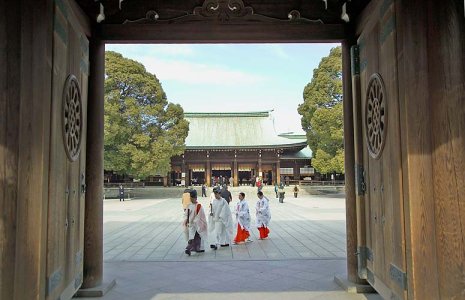
Priests and Maidens in the Meij Jingu
The only ‘proper’ tourist attraction on this list is the Shinto shrine of Emperor Meiji, great granddad of the current emperor, Akihito. You might get a bit of a surprise when you turn up as, despite being slap-bang in the middle of the biggest city in the world, the shrine is a forest made up of 120,000 trees!
You could get lost in there and think you were miles from civilization. In its inner garden is a spring with magic powers – if you drink the water it makes you powerful – or so the Shinto priests claim. Right in the middle of the forest you’ll find the inner shrine, where you can make your offering to Meiji. First ring the giant bell to get his attention, then toss a coin into the box. Finally bow twice, clap your hands, then bow once more.
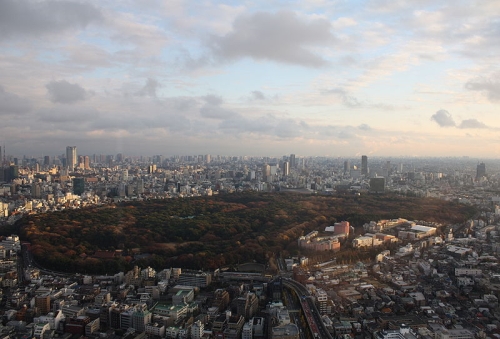
The Meiji Jingu and adjoining Yoyogi Park. You can just make out the green copper roofs of the central shrine complex amongst the trees.
If you hang around for half an hour or so on a weekend day you are almost certain to see a wedding procession making its way through the shrine. First comes the priest and his assistant, followed by two maidens, then the bride and groom, both in kimonos and sheltered beneath a giant parasol. Finally all the guests will parade along behind them. If you don’t see any weddings you must have chosen a day that’s inauspicious in the Shinto calendar – better luck next time.
Access: Harajuku station on the Yamanote line.
Web: http://www.meijijingu.or.jp/english/
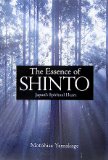 The Essence of Shinto: Japan’s Spiritual Heart
By Motohisa Yamakage.
If you want to get into Japan’s native Shinto religion a bit more deeply than you could from a quick visit to a shrine, you couldn’t start in a better place. Written by a former grand master, this book provides an easy introduction to the key concepts of Shintoism, and the author’s spirituality seems to seep out of the page. It’s so well written that, as you read about oneness with nature and personal purification, you really can feel a sense of inner peace growing within you.
The Essence of Shinto: Japan’s Spiritual Heart
By Motohisa Yamakage.
If you want to get into Japan’s native Shinto religion a bit more deeply than you could from a quick visit to a shrine, you couldn’t start in a better place. Written by a former grand master, this book provides an easy introduction to the key concepts of Shintoism, and the author’s spirituality seems to seep out of the page. It’s so well written that, as you read about oneness with nature and personal purification, you really can feel a sense of inner peace growing within you.
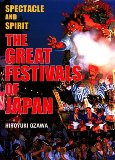 The Great Festivals of Japan: Spectacle and Spirit
By Hiroshi Ozawa.
There are thousands of Shinto festivals held all over Japan every year, most of which can trace their roots back into time beyond memory. Japanese people don’t tend to be overly pious – if anything they’re usually anti-religion, but that doesn’t stop them taking part in their local festival with a fervour that they almost never express openly at any other time. This book uses both words and pictures to recreate the drama of a diverse collection of festivals from all over Japan.
The Great Festivals of Japan: Spectacle and Spirit
By Hiroshi Ozawa.
There are thousands of Shinto festivals held all over Japan every year, most of which can trace their roots back into time beyond memory. Japanese people don’t tend to be overly pious – if anything they’re usually anti-religion, but that doesn’t stop them taking part in their local festival with a fervour that they almost never express openly at any other time. This book uses both words and pictures to recreate the drama of a diverse collection of festivals from all over Japan.
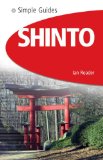 Shinto
By Ian Reader.
This book is much more of a general overview of Shinto, written from a neutral perspective, rather than as a passionate exposition of the religion. It’s very readable, and conveys heaps of information with a modest amount of words. I’d recommend it as the best place to start reading, if your aim is to maximise your knowledge of Shintoism.
Shinto
By Ian Reader.
This book is much more of a general overview of Shinto, written from a neutral perspective, rather than as a passionate exposition of the religion. It’s very readable, and conveys heaps of information with a modest amount of words. I’d recommend it as the best place to start reading, if your aim is to maximise your knowledge of Shintoism.

